Ballinasloe Fair & Festival
Great October Fair
A local hotel has a restaurant called Marengo. Diners who happen to be historians may wonder what a battle fought in northern Italy between the French and the Austrians on 14th June 1800 has to do with the town of Ballinasloe.
The explanation is that the French who won the day were led by Napoleon Bonaparte who re-named the charger he had ridden in the field Marengo, a horse that was later to carry him to victory at the battles of Austerlitz, Jena and Wagram. Legend has it that Marengo had been bought at the Ballinasloe October Fair.
There appears to be no evidence to support this claim, but neither is there any proof that the story is false. Indeed, it may well be true, because Continental quartermasters, or their agents, were a regular feature of the Fair as major buyers of horse-flesh
from the 18th century right up to the Second World War.
It might be thought that the internal combustion engine had rendered the horse redundant in military affairs as the 20th century advanced. Not so. European armies made extensive use of horses to draw gun-carriages and supply wagons because the horse could traverse terrain that a motor lorry would find difficult if not impossible to negotiate. Irish horses were specially prized for their versatility both as mounts and for draught work.
Odd as it may strike us today, up to 50 years ago horses were a minor, though important, component of the Fair which was mostly about sheep and cattle until the livestock marts took over. Originally it seems that the Week began with a sheep fair for wether hoggets on Monday, followed by a fair for ewe hoggets on Tuesday. Wednesday was the horse fair, Friday was for cattle, and animals “missed” earlier in the week were presented at the Country Fair on Saturday.
By the middle of the 19th century, however, probably at the behest of the Earl of Clancarty, a Monday start had been precluded, apparently so that the Godfearing townsfolk would be spared the sight of people desecrating the Sabbath by erecting pens in the Green on the eve of the sheep fair. Very likely it was around this time that the convention was established of holding the October Fair in the week in which the first Tuesday of the month fell.
liam 005Thursday was allotted to the horse fair, but towards the end of the century there were complaints that the better-quality animals were being sold off earlier in the week prior to the officially designated day. The solution was to move the horse fair forward to Monday in the knowledge that no-one would dare to offer an affront to local sentiment by trading in horse-flesh on the Sabbath. Nowadays, however, there is probably as much if not more buying and selling done on the Sunday as on the Monday.
The origins of the October Fair are lost in the mists of time, though there’s speculation that it developed in the 16th century in response to the export trade from Galway in hides and salted beef, a trade that expanded significantly in the following century when the city became a victualling port for the British West India Fleet, which meant that Galway merchants required large amounts of meat to process and sell to the navy. The Fair received an additional boost from the move towards pasture in the 1730s prompted by frequent wars and diseases among cattle on the Continent, combined with the exemption of grazing land from tithes. By the end of the century the October Fair had became the principal sheep and cattle mart of these islands, acquiring a European-wide reputation.
Continuing to expand in the 19th century, it reached a peak sometime in the 1860s. Perhaps the most powerful agent in its subsequent decline was the railway which reached the town in 1851. While it initially helped the Fair by facilitating the transport of livestock, it eventually reduced its importance by promoting the establishment of smaller fairs elsewhere.
Due to the growing mechanization of Irish farms in the 1950s, it is conceivable that the horse fair would have gone the way of the sheep and cattle fairs by the 1970s had it not been for the efforts of successive Fair and Festival Committees, coupled with the fact that more disposable income became available in the ‘60s creating an increased demand for what might be termed recreational horses.
Though the agents of foreign armies who bought the likes of Marengo have been consigned to the pages of history, visitors still flock from far and wide, the Continent included, to savour the unique atmosphere of the October Fair. Aside from its strictly commercial aspect, it’s one of the great social events of the West of Ireland, a popular occasion for emigrants to re-visit their native town and renew old acquaintances. Ballinasloe, in the form of the October Fair, has had for many years its own “Gathering” without anyone thinking to name it so.


